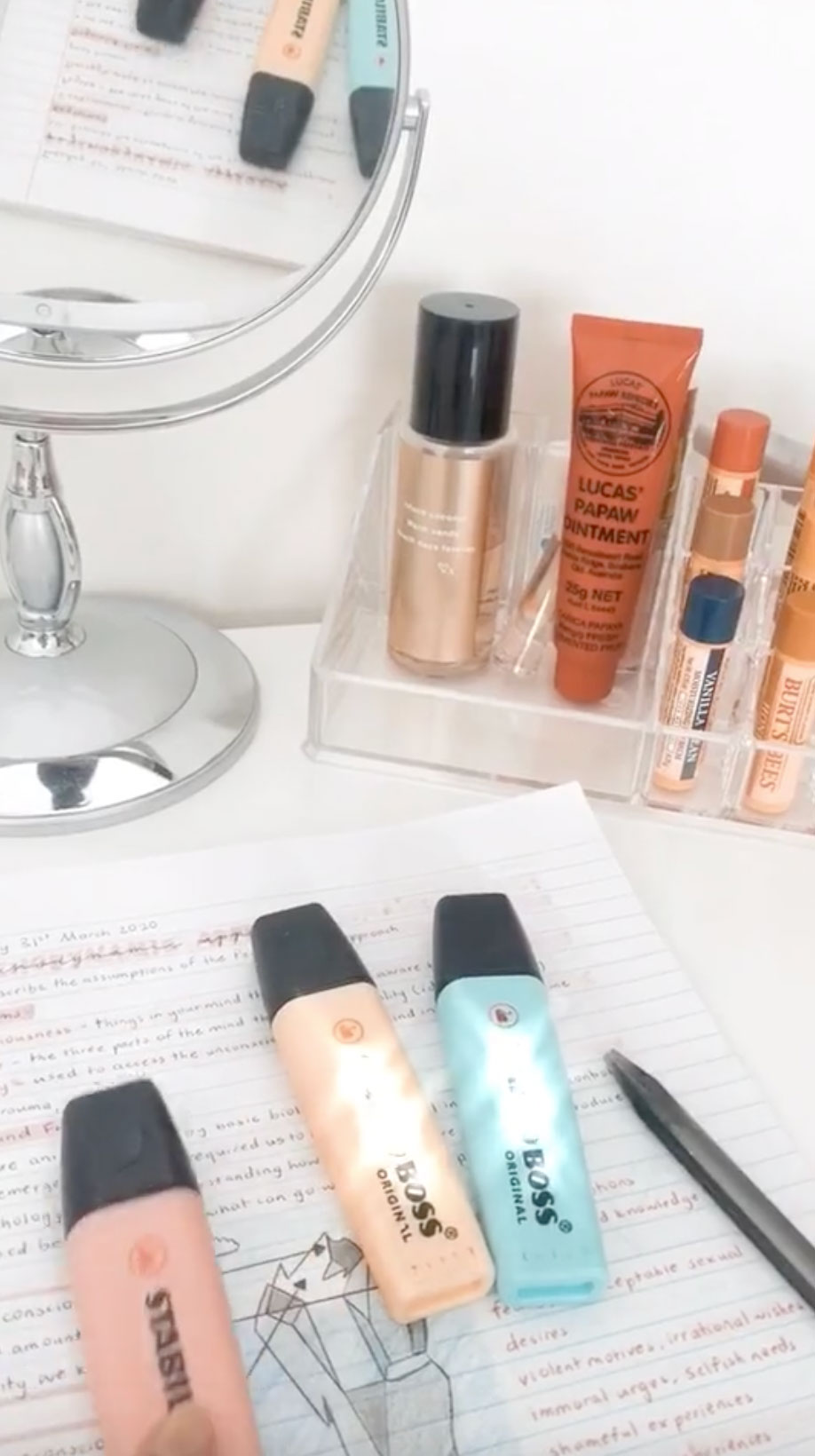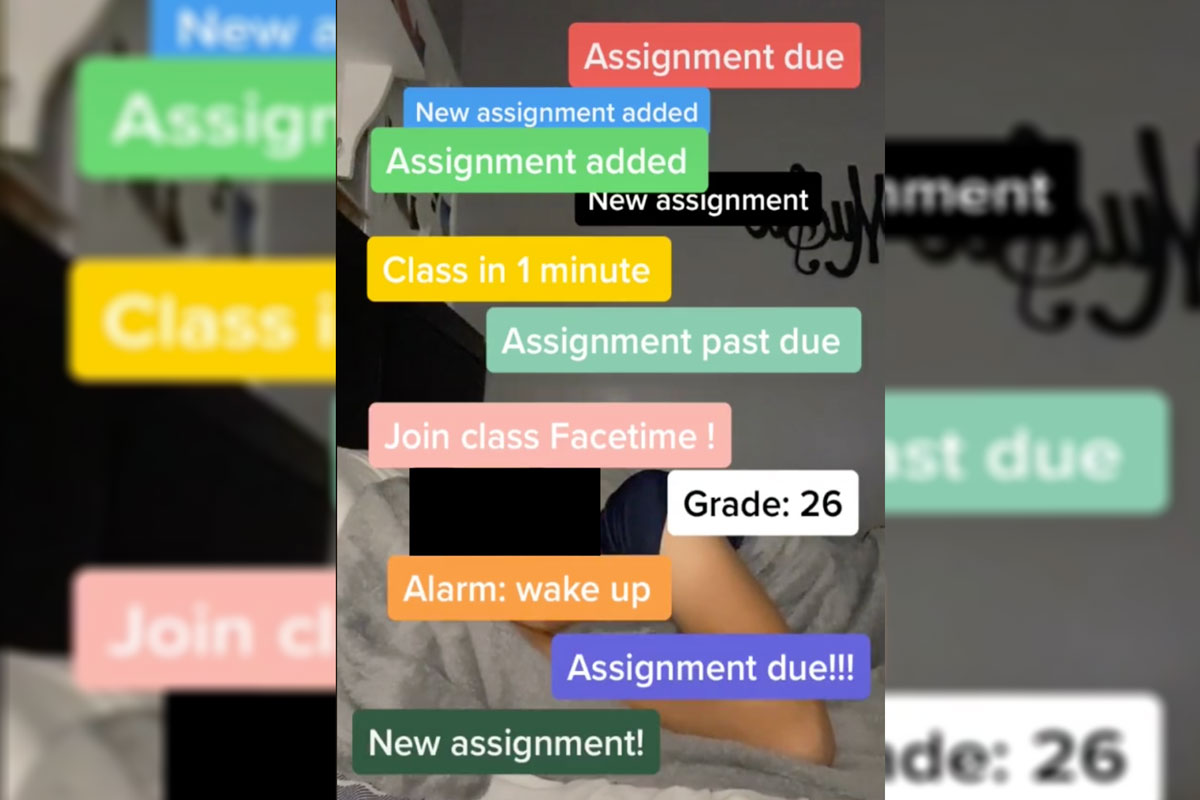The kids are not “alright” — and they’ve been saying as much on TikTok since last spring, when schools across the nation responded to the COVID-19 pandemic by switching to remote learning.
That’s a central message of a new study, “Teachers Act Like We’re Robots”: TikTok as a Window Into Youth Experiences of Online Learning During COVID-19,” by Teachers College’s Ioana Literat, Assistant Professor of Communication, Media & Learning Technologies Design, which reports that students are experiencing online coursework as “overwhelming, relentless and demotivating against the traumatic background of the pandemic.” The study, published in the American Education Research Association’s open access journal AERA Open in February, is based on an analysis of nearly 2,000 English- and Spanish-language TikTok videos with hashtags related to online learning, posted between March and June last year.

SHE KNOWS THE TERRAIN Ioana Literat, an authority on how young people use social media, has previously published studies of youth online political expression on platforms such as TikTok, Instagram, YouTube, Scratch, Archive of Our Own (AO3) and hitRECord. (Photo: TC Archives)
Literat is an authority on how young people use social media. She has previously published studies of youth online political expression on platforms such as TikTok, Instagram, YouTube, Scratch, Archive of Our Own (AO3) and hitRECord. Thus far, she says, most research and writing about online learning during the pandemic has focused on adults such as teachers, parents, administrators and policymakers. To find out how high school and middle school students were doing (how they were really doing), Literat turned to public postings on TikTok, the popular online space with more than 800 million monthly users where youth go to create and post short videos and “goof off, socialize, and share their everyday experiences — including their experiences of online learning.”
The result is a raw, often humorous, but also often poignant and painful digital record of how teenagers are spending hours on end in front of computers, laptops or mobile phones, balancing competing concerns of school, family and friends. Students report much heavier workloads than they had when school was held on campus, requiring “round-the-clock attention and long hours of work.” Teachers “act like we’re some robots who’re gonna sit at the computer and do work all day. . . . This is an overwhelming amount of work,” complains @muddyheaps, for example. @pb_and_j, among others, agrees: “I did more work in the last 3 days than we did in class last month.” (All user names in Literat’s article are pseudonyms.)
In my research on TikTok, I’m not asking them anything. I’m almost like a fly on the wall, listening to how they’re talking amongst themselves.
— Ioana Literat, Assistant Professor of Communications, Media & Learning Technologies Design
Literat identifies some major themes and draws conclusions — some hopeful, some less so.
The stress of feeling overwhelmed has proven so demotivating for some students, including those who did well in in-person school, that they have stopped working altogether, Literat reports, quoting poster @conanisold: “It’s gotten to the point where i dont even have the motivation to COPY homework anymore!” The heavy workload took a toll on @Libby’s mental health. “I have about 10x more work now and I have to do it all while my depression that I had under control until this returns,” she posted. Similarly, “ADHD gang is not doing well today,” posted @AmphibeeAssembly.
Literat says she takes some of the negative reaction “with a grain of salt,” because “it is natural for students to complain about school and teachers, online and off.” She doesn’t want these findings to be interpreted as “blaming teachers,” who were often as much at sea with technology as their students were, especially within the traumatic emergency remote education context of March-June 2020, and were sincerely trying to do a good job.
Still, she observes that kids under stress turned to teachers for authentic support and empathy, and that the results were decidedly mixed.
For example, a popular video posted by @lollllsam used comedy to make a point about online class check-ins lacking heart and authenticity. “In the skit, in which @lollllsam used different props and costumes to play all the characters, a teacher was shown greeting each student at the start of class with criticisms, threats of disciplinary action, and perfunctory acts of concern, instead of authentic support,” writes Literat.
@lollllsam got a lot of affirmative feedback from students who agreed that their teachers were not supportive, either. But @ruthaudrey25’s video showed her teacher greeting her warmly at the beginning of every class. Reactions to @ruthaudrey25 “marveled at ‘how nice [the teacher] sounds’ and how they wished their teachers were similar, highlighting the desire for authentic care amid an emotionally challenging time,” Literat writes.
Some students thought their teachers were insensitive to what was going on in their non-academic lives. “Teachers don’t know that some of us have parents who are in the hospital who have the corona and we cry everyday about it & it shows,” posted @Brianna.
A third theme is that, in demonstrations of empathy, solidarity and resilience, some students “both received and provided emotional and educational support to peers on the platform,” Literat writes. “Indeed, this sense of peer support was a running thread throughout the videos and comments.”
Creating policy and curricula for online learning must all begin with a deep understanding of how young people are experiencing online learning in their everyday lives — and how this experience varies, as shaped by their social, cultural, and economic contexts.
— Ioana Literat, Assistant Professor of Communications, Media & Learning Technologies Design
Advice from peers ranged from the technical to the practical to the devious. @katieemerson45 posted a tutorial of how to use YouTube’s automated transcript function to search for and jump to relevant sections in assigned videos. Another student posted studying tips, “(e.g., sit at a desk, not on your bed; don’t have your phone nearby, because it’s too tempting; break down big tasks into smaller ones to keep procrastination at bay).” Another group of videos offered cheating instruction — for example, how to find the answers for Google Forms quizzes by “revealing the page’s source code.”
Literat also discusses some users’ discomfort at having different parts of their lives — school, family and friends (the last one all-important to teens) — collide on their computer or phone screens in ways the students wish they would not.
She gives as an example a transcription of a short video in which a teenage girl “is sitting in front of a laptop, while her mother is heard in the background shouting at her in Spanish to close the computer and start cleaning. Embarrassed, the girl responds, also in Spanish: ‘Mom! My classmates can hear you! Mooooom! The teacher . . . The teacher can hear you!’ before finally closing the laptop and laying her head over it, exasperated. Hundreds of other posters commiserated: “I THOUGHT I WAS THE ONLY ONE WORRYING ABOUT THIS.” “Bro if i’m on the computer for more than an hour she thinks i’m not doing schoolwork and i’m doing something else instead.” “All of us Hispanic kids are scared to take online classes . . . i’m kinda nervous lol.”
Not all of this concern can be chalked up to typical teenage embarrassment, Literat says. Educators began noticing early on in the pandemic that online teaching can sometimes highlight inequities of resources that wouldn’t necessarily show up at school. Some kids are reluctant to let others see what their study space (or lack thereof) looks like. Others want to hide signs of physical or verbal abuse by family members at home.

WHEN WORLDS COLLIDE Some students dislike having teachers and peers see their home environments. Others show off their bedrooms or study spaces.
Conversely, Literat points out, other teens show off their luxuriously furnished bedrooms or study spaces with videos featuring TikTok’s “bling” effect, a sparkly visual filter. As humorous, stylized or even silly as it may seem, this flaunting of wealth can make some less-wealthy teenagers want to never come back on camera.
Literat calls her approach to social media research “naturalistic,” as distinct from more traditional research methods like interviews or surveys: “Research always involves a power dynamic. If I’m asking them, ‘how do you feel about formal education,’ they’re going to feel pressure to respond in a certain way.” As an adult researcher, she would unavoidably be perceived by youth as being in the more powerful position. “In my research on TikTok, I’m not asking them anything. I’m almost like a fly on the wall, listening to how they’re talking amongst themselves.”
Another value of this type of research, Literat says, is that searching by hashtags, which are used by anyone who wants to contribute to a particular discussion, and collecting large amounts of data allows her to get a “large cross-section of experience [and] racial, ethnic, socioeconomic diversity, which is something that is very hard to get” in more traditional research.
Literat does offer two cautions about this research. One is that the data were gathered in the earliest months of the pandemic, when online learning was still in the emergency phase. Teachers and students were new to online learning, and the global pandemic was creating extraordinary stresses on public and private life. Literat says the picture might look very different now, a year into online learning.
Another caveat is that, as frank and honest as many young people are on TikTok, many of the posts are nevertheless carefully staged and edited. They should not be considered a full and accurate account of online learning during COVID-19. Furthermore, she writes that her research “excludes many salient viewpoints, including from youth who are not active on social media or who are perhaps limited in digital capacities.”
Literat suggests that much more can be learned from TikTok and other social media about “how youth communicate and learn — how they live — right now.” If online learning is to continue after the pandemic and get better, “creating policy and curricula for online learning must all begin with a deep understanding of how young people are experiencing online learning in their everyday lives — and how this experience varies, as shaped by their social, cultural, and economic contexts.”
